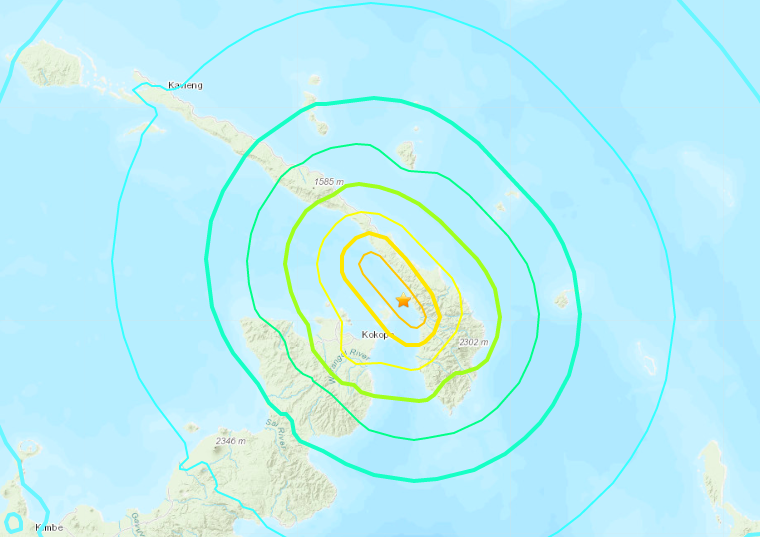WELLINGTON, New Zealand — A powerful earthquake rattled coastal townships in Papua New Guinea late Tuesday and authorities say there have been no initial reports of major damage or injuries.
The magnitude 7.5 quake struck in the ocean about 45 kilometers (28 miles) northeast of Kokopo, a town with a population of about 26,000, according to the U.S. Geological Survey. It was followed by several large aftershocks.
Chris McKee, the acting director of geohazards management, said there was some damage in Kokopo as items were shaken from shelves and the power had been cut. He said there had been a small tsunami although it was dark at the time and information about it remained sketchy.
McKee said the earthquake was a strike-slip event along a fault line, a type of quake that doesn’t usually trigger major tsunamis.
The quake struck at a relatively shallow depth of 10 kilometers (6 miles), according to the USGS. Shallow earthquakes tend to cause more damage on the Earth’s surface, but the USGS estimated that damage and injuries would be low because of the area’s sparse population.
Garfield Tarabu, a spokesman at the National Disaster Centre, said a disaster coordinator was on the ground assessing the situation in and around Kokopo but they hadn’t yet gotten an update on the extent of the damage.
The U.S. Pacific Tsunami Warning Center had said tsunami waves of up to 1 meter (3.3 feet) were possible along coastal areas up to 1,000 kilometers (620 miles) from the epicenter, including Papua New Guinea and the nearby Solomon Islands.
Papua New Guinea is located on the eastern half of the island of New Guinea, to the east of Indonesia.
It sits on the Pacific’s “Ring of Fire,” the arc of seismic faults around the Pacific Ocean where much of the world’s earthquakes and volcanic activity occurs.
A magnitude 7.5 earthquake in February 2018 in the nation’s central region killed at least 125 people and forced another 35,000 from their homes. That quake hit areas that are remote and undeveloped, and assessments about the scale of the damage and injuries were slow to filter out.
